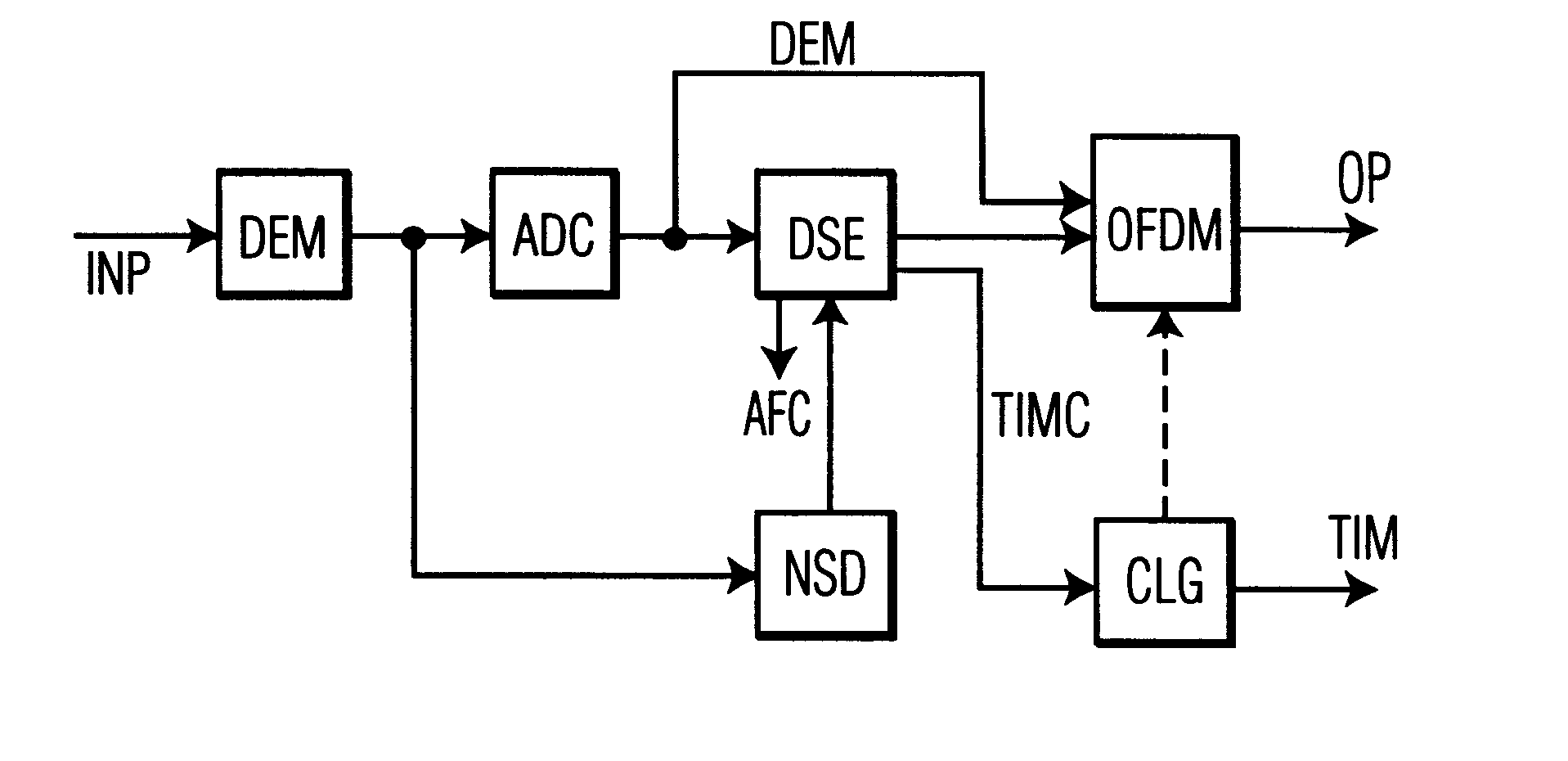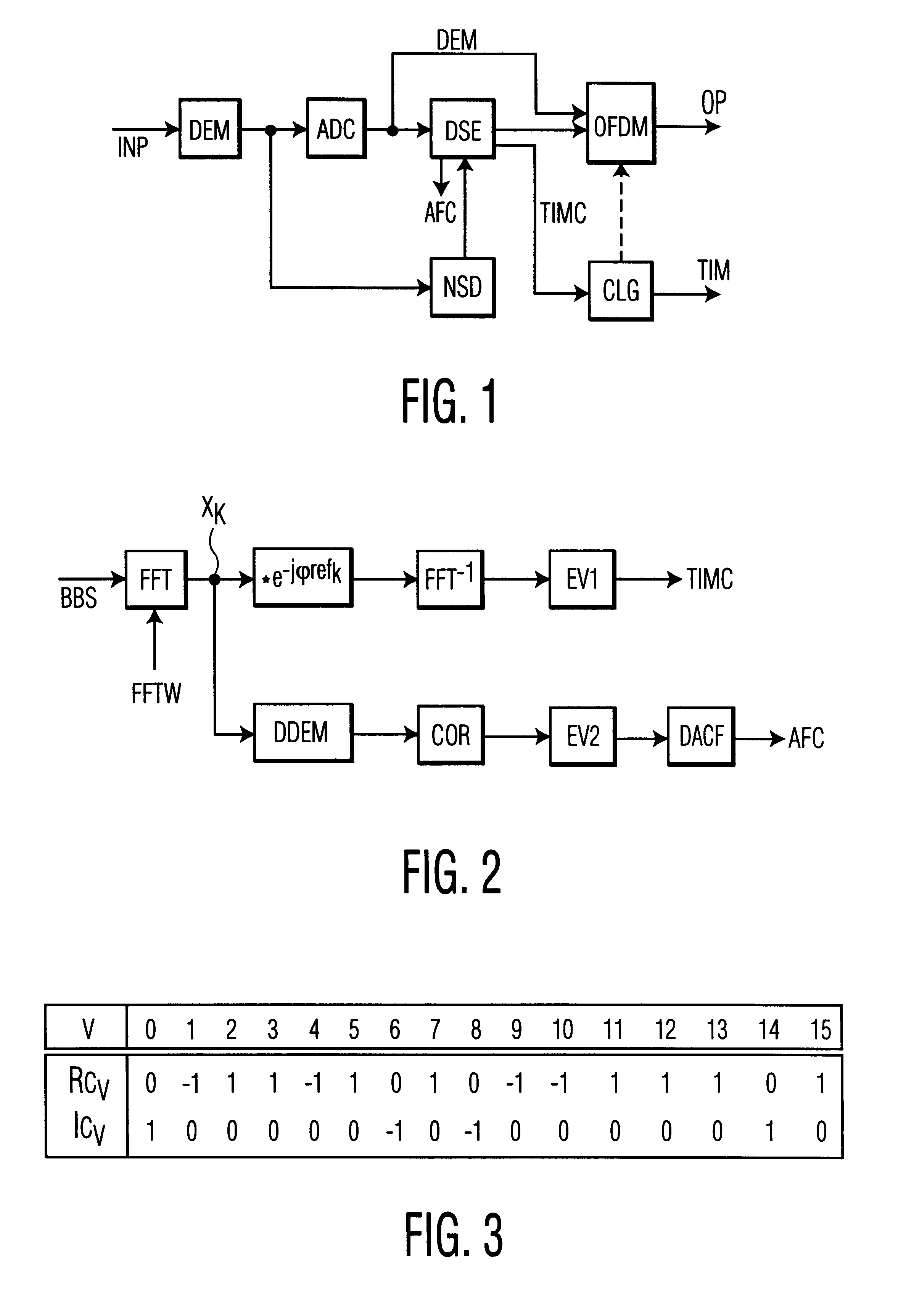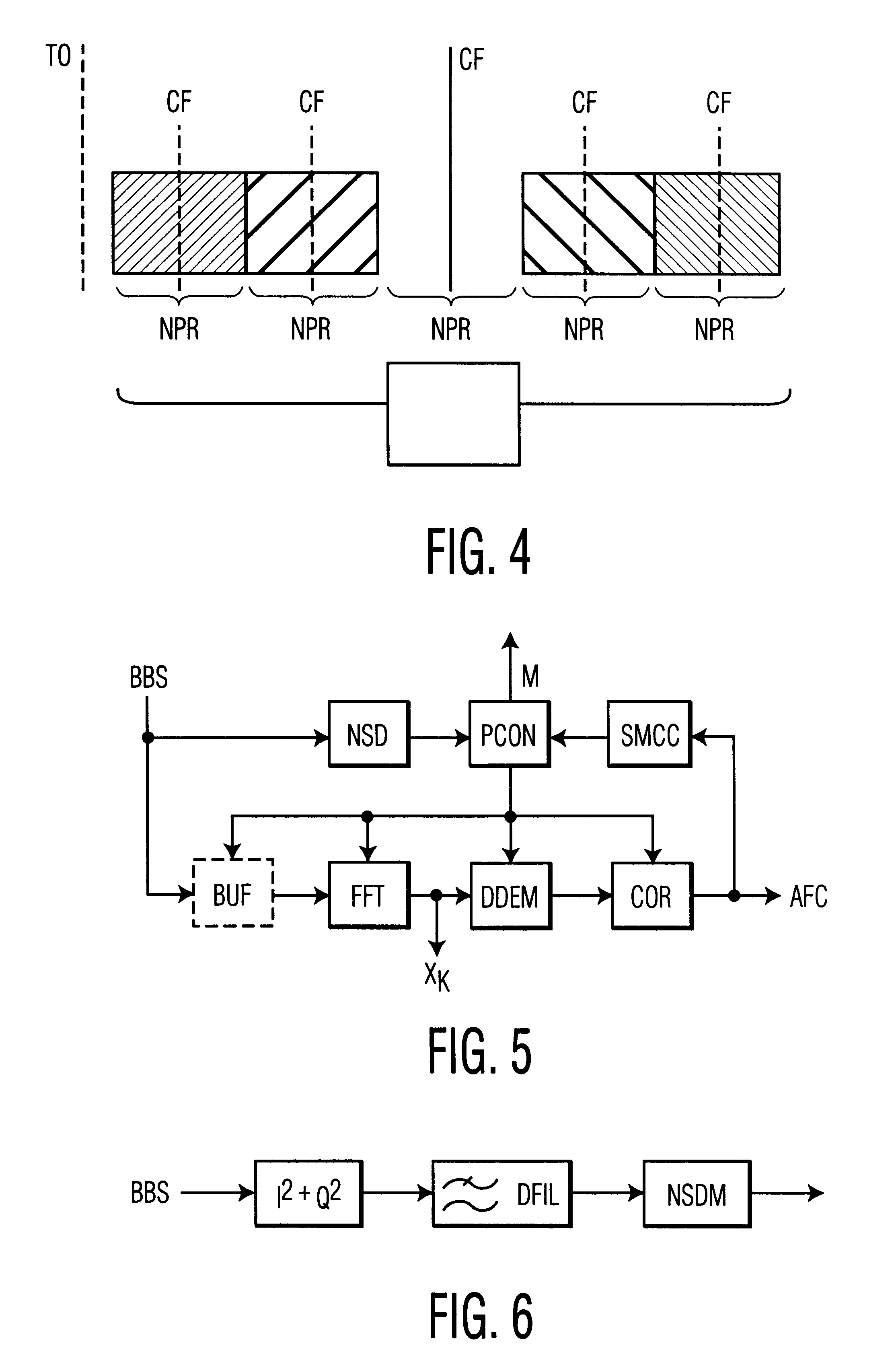Method for reception of multicarrier signals and related apparatus
a multi-carrier and receiver technology, applied in the field of multi-carrier receiver technology, can solve the problems of questionable practicability of such methods, and achieve the effect of increasing the reliability of results
- Summary
- Abstract
- Description
- Claims
- Application Information
AI Technical Summary
Benefits of technology
Problems solved by technology
Method used
Image
Examples
Embodiment Construction
In FIG. 1 a received input signal INP is demodulated in a demodulator circuit DEM. Following A-to-D conversion, a respective time section of the received signal may be stored in the receiver. In a prior art receiver as well as in the inventive receiver time synchronisation starts with a detection of the null symbol in a succeeding null signal part detector NSD, which implies envelope calculation, matched filtering and center calculation. This can be done either by analogue / digital or by pure digital processing. The further processing in the inventive receiver is carried out as follows: If a system-conform signal is detected, the output signal of demodulator DEM is converted to a digital signal in analog to digital converter ADC and input as a baseband signal BBS to OFDM decoder OFDM which delivers the final output signal OP. The output signal of ADC also enters a digital synchronisation evaluator DSE which controls OFDM and which supplies control data TIMC to a clock generator CLG. ...
PUM
 Login to View More
Login to View More Abstract
Description
Claims
Application Information
 Login to View More
Login to View More - R&D
- Intellectual Property
- Life Sciences
- Materials
- Tech Scout
- Unparalleled Data Quality
- Higher Quality Content
- 60% Fewer Hallucinations
Browse by: Latest US Patents, China's latest patents, Technical Efficacy Thesaurus, Application Domain, Technology Topic, Popular Technical Reports.
© 2025 PatSnap. All rights reserved.Legal|Privacy policy|Modern Slavery Act Transparency Statement|Sitemap|About US| Contact US: help@patsnap.com



